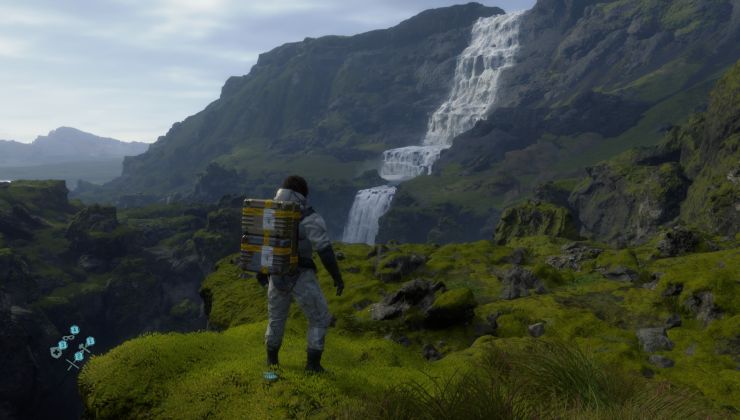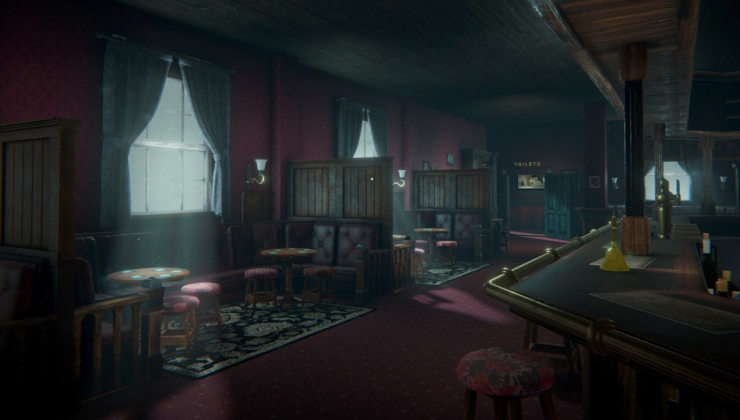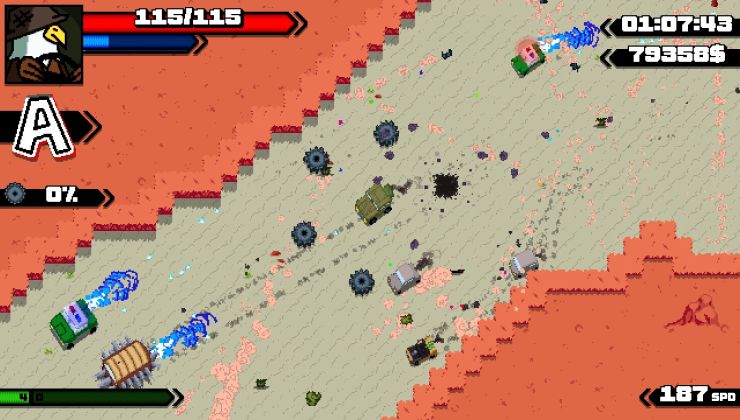Here’s an interesting one, a developer from NVIDIA noted on the Linux Kernel Mailing List that NVIDIA has been designing some new open source drivers. So I did some digging and got an interesting response.
Here’s what they said that originally caught my attention (source, thanks Luke!):
I got curious, so I popped the NVIDIA developer who said that an email asking if they would mind clarifying it a bit, so they did and they allowed me to share their reply:
This could be something very interesting, but it sounds like it’s still a long ways off right now. It’s interesting to note that NVIDIA are working behind the scenes on more open drivers for Linux, which can only be a good thing for our future. Open drivers are one major reason I keep seeing people switching over to AMD, so perhaps in future with the work from this NVIDIA developer (and others they mentioned) things may change for the better.
They may even go the amdgpu route, where part of it is open and part closed.
Here’s what they said that originally caught my attention (source, thanks Luke!):
Quote[...] when designing some recent new (open-source, yay!) device drivers[...]
I got curious, so I popped the NVIDIA developer who said that an email asking if they would mind clarifying it a bit, so they did and they allowed me to share their reply:
QuoteHi Liam,
Here, I was referring to the UVM (Unified [Virtual] Memory) device driver. That shows up as nvidia-uvm.ko, which in turn depends on another driver (currently nvidia.ko) to handle GPU setup. UVM does page faulting, DMA via our GPU's copy engines (DMA units), and generally figures out what pages belong where.
UVM is about 66,000 lines, it's all open source (MIT licensed, right now), and you can find it by running `NVIDIA*.run -x` and looking at the extracted source code.
Future: naturally, it would be interesting to be able to drop in something else (Nouveau?? Tegra? other?) to optionally take the place of nvidia.ko. However, that may or may not happen--there are a lot of things going on, and despite being in the middle of it all, I still cannot yet predict exactly what module layout we'll end up with in, say, a few years. The interface between nvidia.ko and nvidia-uvm.ko is much messier than I'd like, and it will take some engineering time to clean it up--that's good to do in any case...but I'm digressing.
As for what I think you really care about: there are other open source initiatives in NVIDIA. I and others are actively working on them, but unfortunately, we don't quite have a publicly announceable thing yet.
This could be something very interesting, but it sounds like it’s still a long ways off right now. It’s interesting to note that NVIDIA are working behind the scenes on more open drivers for Linux, which can only be a good thing for our future. Open drivers are one major reason I keep seeing people switching over to AMD, so perhaps in future with the work from this NVIDIA developer (and others they mentioned) things may change for the better.
They may even go the amdgpu route, where part of it is open and part closed.
Some you may have missed, popular articles from the last month:
Good development, but in about a year it will be time to replace my 960, and I'll be going with what then works better with open drivers. If that's to be team green, they have some work to do.
1 Likes, Who?
I dunno... I'm a bit shameless in that I'll gladly run any proprietary blob that didn't come from Microsoft or another company known to do sleazy anti-consumer things at a software level. Anything to get away from Windows. Anything.
People easily forget that The Blob was for a long time the ONLY performant hardware 3D solution for Linux, period. It's really awesome that we have more and open source options now, but their hardware under their proprietary drivers is still far and away the most powerful Linux solution.
As a VR gamer, that's all but necessary due to how insanely demanding current VR hardware and software is. SteamVR supports radeonsi with certain versions of the RADV driver, but it's questionable whether it can achieve even halfway acceptable performance, even on the R9 Fury or RX 480. On the other side, my 1070 meets that critical 90fps mark with room to spare.
People easily forget that The Blob was for a long time the ONLY performant hardware 3D solution for Linux, period. It's really awesome that we have more and open source options now, but their hardware under their proprietary drivers is still far and away the most powerful Linux solution.
As a VR gamer, that's all but necessary due to how insanely demanding current VR hardware and software is. SteamVR supports radeonsi with certain versions of the RADV driver, but it's questionable whether it can achieve even halfway acceptable performance, even on the R9 Fury or RX 480. On the other side, my 1070 meets that critical 90fps mark with room to spare.
2 Likes, Who?
Quoting: gojulI've read a while ago that 95% of the driver code was shared between Linux and Windows which would explain why they do not open source them. However it is a small step in the right direction.
How exactly does this give a reason for why they wouldn't open source?
0 Likes
My opinion is a minority one but whether Nvidia open sources their current or creates new open source drivers is something I really could care less about.
What's important to me is that once I buy hardware that it runs as it is supposed to. Running half ass or barely at all because the open source drivers are not up to snuff is something I'm not interested in spending my hard earned money on.
When it comes to regular desktop things I'm more than happy to run Nouveau for my Nvidia hardware...when it comes to my gaming box that is another story. I want top performance and if the closed driver is the only one available then I will gladly use it.
Without that closed driver we wouldn't be able to discuss AAA games that have come out...only open source games that run on open source drivers.
I can only play TuxCart so long before I want to play a AAA game.
What's important to me is that once I buy hardware that it runs as it is supposed to. Running half ass or barely at all because the open source drivers are not up to snuff is something I'm not interested in spending my hard earned money on.
When it comes to regular desktop things I'm more than happy to run Nouveau for my Nvidia hardware...when it comes to my gaming box that is another story. I want top performance and if the closed driver is the only one available then I will gladly use it.
Without that closed driver we wouldn't be able to discuss AAA games that have come out...only open source games that run on open source drivers.
I can only play TuxCart so long before I want to play a AAA game.
0 Likes
Quoting: GuestI can't help but mention r200 drivers here. Before proprietary blobs, there were insanely fast open source drivers. Graphics hardware a good deal simpler back then, so it's not a good comparison to today's options. Thing is though, it was nvidia who introduced "The Blob", and if they hadn't been so obsessed with hiding everything behind a proprietary wall back then, it's likely that the entire graphics stack on GNU/Linux would be in better shape today.
I think, if it weren't for The Blob, then Linux wouldn't have been a viable platform for intensive 3D applications at a critical moment, and even its emergence as a viable desktop OS would have been delayed by a good decade or more. It was the crutch needed to keep up with Windows on the performance front and allow it to compete until it had enough momentum to attract professional developers to FOSS drivers.
At the time, interest in desktop Linux was minimal and Windows held an even stronger dominance than they do now. This meant the pool of hobbyist man-hours available for driver development was very limited. Without so much as a datasheet on nV silicon and lacking data on ATI hardware combined with the explosion in GPU complexity, that tiny spark would have been utterly snuffed out, and Linux would've been dependent on software rendering solutions for everything outside of really old hardware that wouldn't be to keep up with software rendering on CPUs available at the time those GPUs gained accelerated Linux drivers. Microsoft would've stayed complacent about DirectX development, in effect donating their entire slice of the gaming market to consoles. PC gaming would have then become restricted to hobby developers with little aspiration of making ANY money on it, and Linux gaming would've been the exclusive domain of open source projects relying entirely on software rendering.
0 Likes
Quoting: roothorickI think, if it weren't for The Blob, then Linux wouldn't have been a viable platform for intensive 3D applications at a critical moment, and even its emergence as a viable desktop OS would have been delayed by a good decade or more. It was the crutch needed to keep up with Windows on the performance front and allow it to compete until it had enough momentum to attract professional developers to FOSS drivers.
I don't think it has anything to do with GNU/Linux being a viable desktop OS at all. Things would have been entirely fine in that regard, blob or not. Games and 3D acceleration have been at best an afterthought for users for the entirety of the platform's existence in my opinion.
0 Likes
Blob or not the end-user should not have to worry about this.
If it's a gamer, he would like to install the latest and best graphics drivers and they should work as their are supposed to do.
The problem nowadays is that NVidia's blob is not working and having an open-source driver could take workload from the company into the community.
We just have to wait and see what happens.
If it's a gamer, he would like to install the latest and best graphics drivers and they should work as their are supposed to do.
The problem nowadays is that NVidia's blob is not working and having an open-source driver could take workload from the company into the community.
We just have to wait and see what happens.
0 Likes
Quoting: EmazzaThey might have patents implementations that they have to work around (because they have integrated them under NDA) and specific optimizations for games, basically loads of secret sauces they don't want to open yet...
Patents implementations yeah (I'm guessing relating to the graphics cards themselves and the manufacturers of those graphics cards?), but specific optimizations for games? They're not charging for these drivers are they? So why not open them (if the latter reason is the only reason), unless they're planning to charge for them in the future?
0 Likes







See more from me